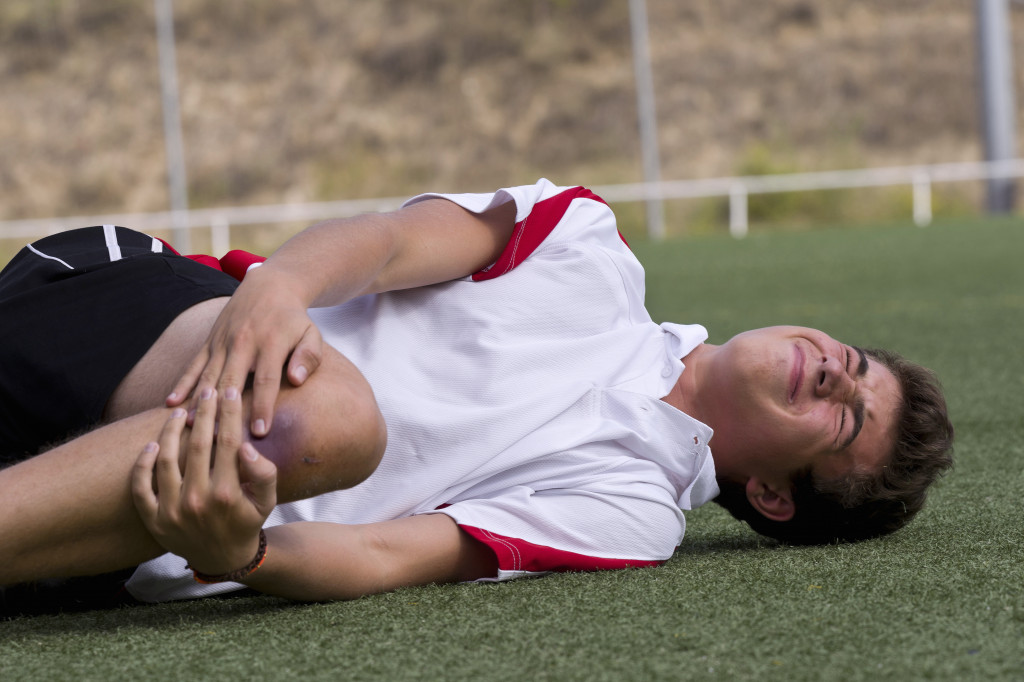Physical therapy isn’t the only available treatment for severe sports injuries. In fact, it can only be follow-up treatment after a more invasive one, like surgery. And speaking of invasive treatment, casting isn’t the only available type of it, either. There are various types of treatments for severe sports injuries, with benefits lasting for the long term.
Athletes whose injuries have ended their careers can undergo some of these treatments and be stronger again. Experienced sports injury doctors will also find a way to make them perform again. Consider these treatments if you just sustained a crippling injury or, if you plan to run your own physiotherapy clinic, check out how these treatments will benefit your business:
1. Taping and Bracing
Taping and bracing are typically used to treat injured ankles. Ankle sprains, in particular, are the most common sports-related injury in the States. Severe cases can tear the ligament partially or completely.
Before taping and bracing, ankle sprains were treated by wrapping. It was believed to reduce the severity of the injury. Over time, wrapping evolved into bracing, which is a more sustainable type of treatment. The athletes themselves can apply their own ankle brace, reuse it, and adjust it. But in the beginning, a licensed sports physician or an athletic training staff must apply the brace. The athlete should also consult them regularly to help monitor their healing progress.
Ankle taping is a similar treatment. But, as its name suggests, it’s simply wrapping a tape around the ankle, so it’s not adjustable and reusable. As such, ankle bracing is more cost-effective for athletes and doctors. However, some athletes may move more comfortably with a tape than a brace.
Studies have shown that bracing is more effective than taping, but both offer adequate support. Taping and bracing reduce the ankle’s range of motion, lowering risks for further injury and accelerating recovery. Taping can also be a preventive gear, especially when worn with high-top shoes. Studies show that it can lead to 50% fewer injuries.
2. Therapeutic Exercises
Therapeutic exercise is more restorative than repairing. Athletes don’t need broken bones or sprained muscles to try it. Therapeutic exercises are actually popular among older adults or anyone with physiological impairments.
A therapeutic exercise program includes aerobics, resistance, flexibility, and neuromotor exercises for most adults. Athletes with better endurance can include agility and strength training in their program. And because it’s therapeutic, the exercises are meant to increase one’s state of well-being, too. Hence, the program may also include relaxation exercises and breathing exercises. It’s basically a holistic way of dealing with age or injury.

In addition, stroke patients with balance difficulties can also benefit from therapeutic exercises. They may be asked to partake in aquatic therapy, which are exercises done in a pool to reduce pain and improve joint motion.
3. Minimally Invasive Procedures
Minimally invasive procedures are minor surgeries used to treat spine trauma. It’s also called MISS, which stands for minimally invasive spine surgeries.
It’s an effective treatment for burst fractures, flexion-distraction injuries, and unstable or complex sacral fractures. Only an experienced spine surgeon should perform these procedures because they have a steep learning curve. There is reduced tissue exposure in MISS, resulting in a lack of visual and tactile anatomic landmarks, which an inexperienced surgeon may find challenging.
When done correctly, though, MISS is effective and can be a life-saving procedure for athletes or any other type of patient who has sustained multiple traumatic injuries.
4. Regenerative Medicine
Injuries can damage tissues and organs permanently. But with regenerative medicine, doctors can reverse the damage and make the affected organs or tissue like new again.
Regenerative medicine is divided into three categories: cellular therapies, tissue engineering, and other therapies. In cellular therapies, live cells are injected into patients to treat tendinopathy and other sports injuries. One example of specific therapy is stem cell therapy.
Tissue engineering replaces or repairs damaged tissue with natural tissue, synthetic tissue, or a mix of both. It’s often used to treat cartilage injuries.
Lastly, other therapies stimulate the body’s natural healing process without introducing new cells or tissues. Prolotherapy is one example of this. For instance, it injects a natural irritant into the soft tissue of an injured joint. It would trigger a healing response and allow the patient to recover on their own.
With these treatments available, not every injured athlete has to go through surgery, which is costly and takes longer to heal. Aging or previously-injured athletes with decreased mobility can also try them out to restore their agility. These treatments prove that injuries, age, and other circumstances don’t have to end an athlete’s career.



